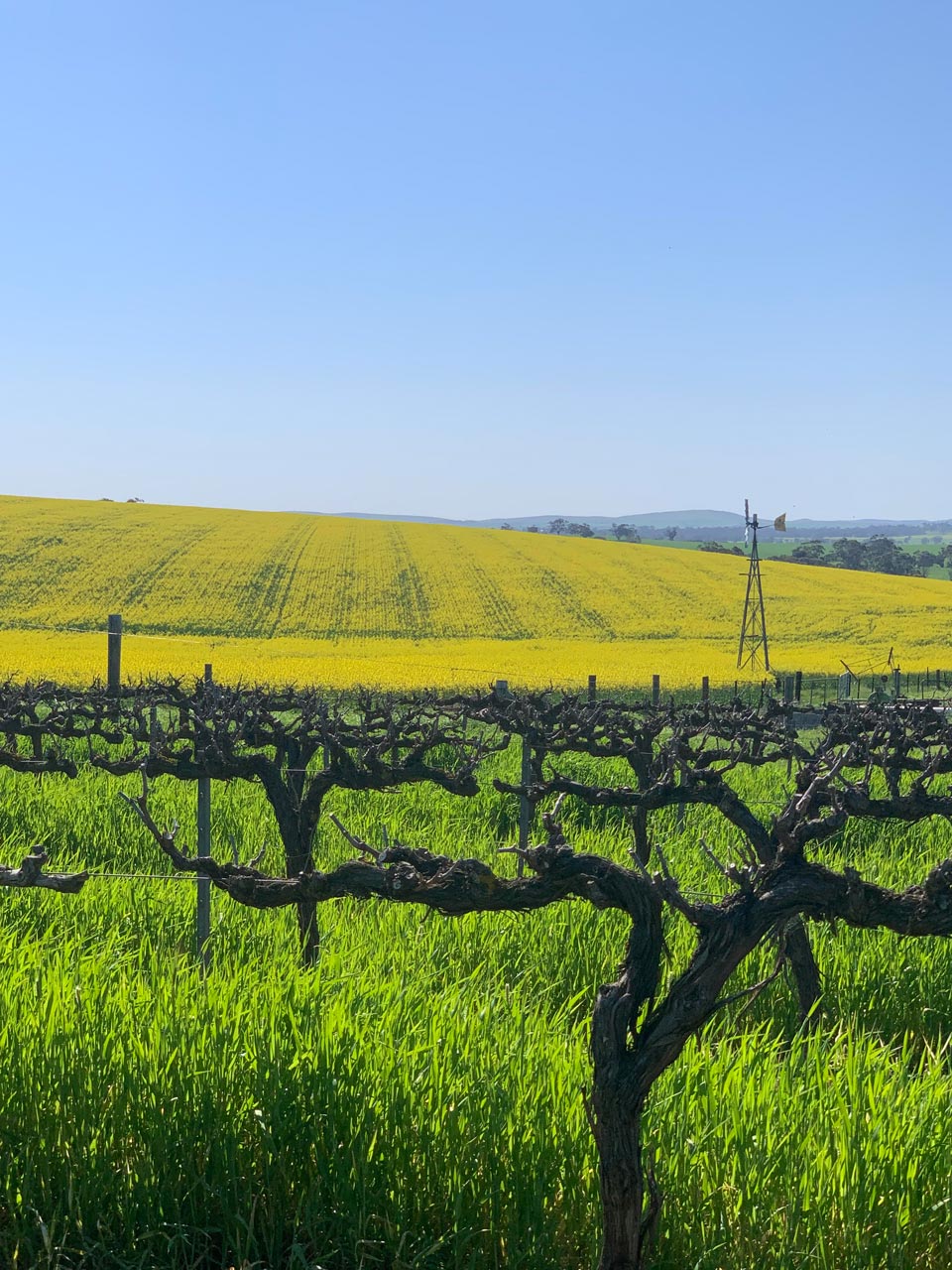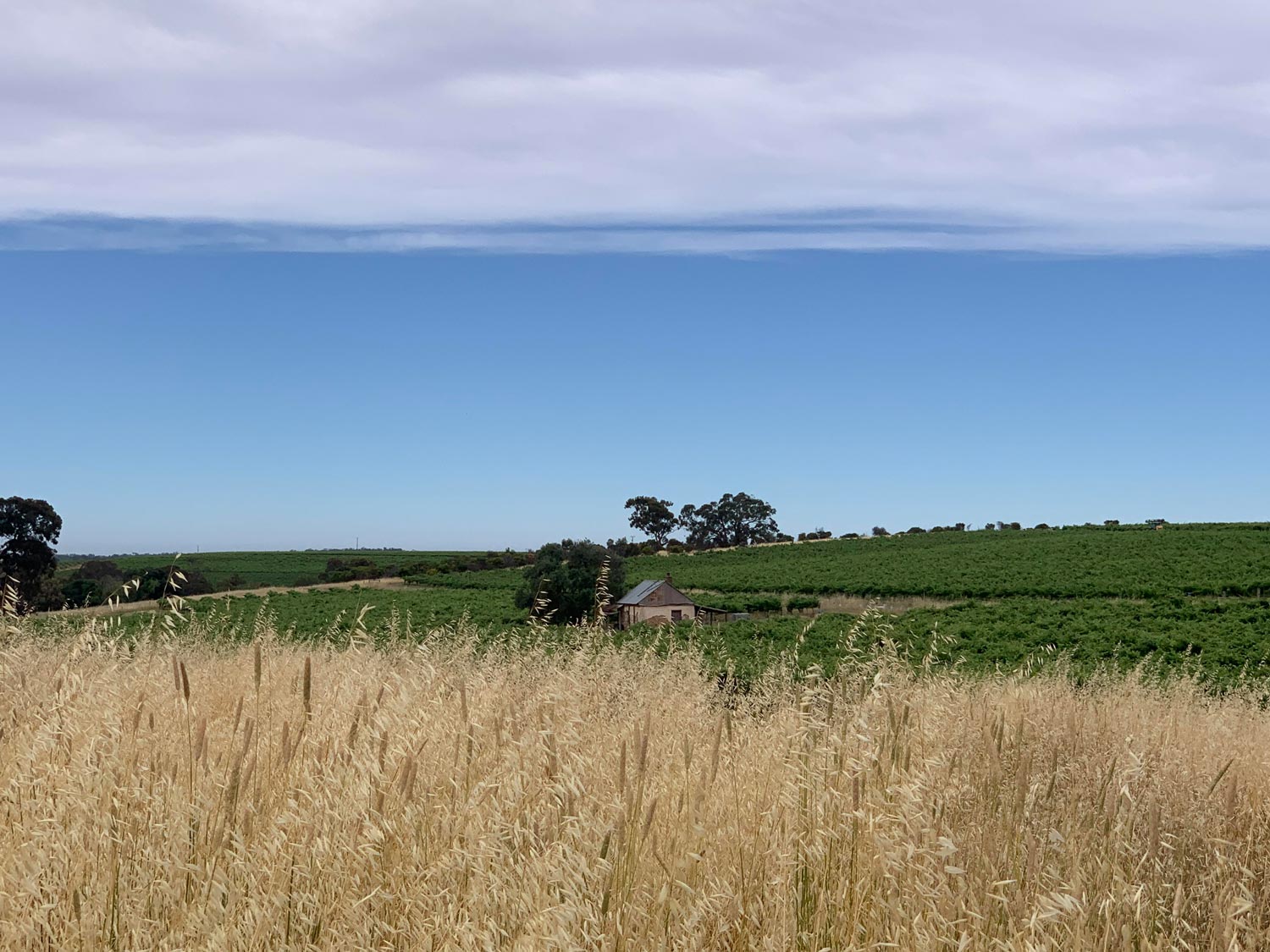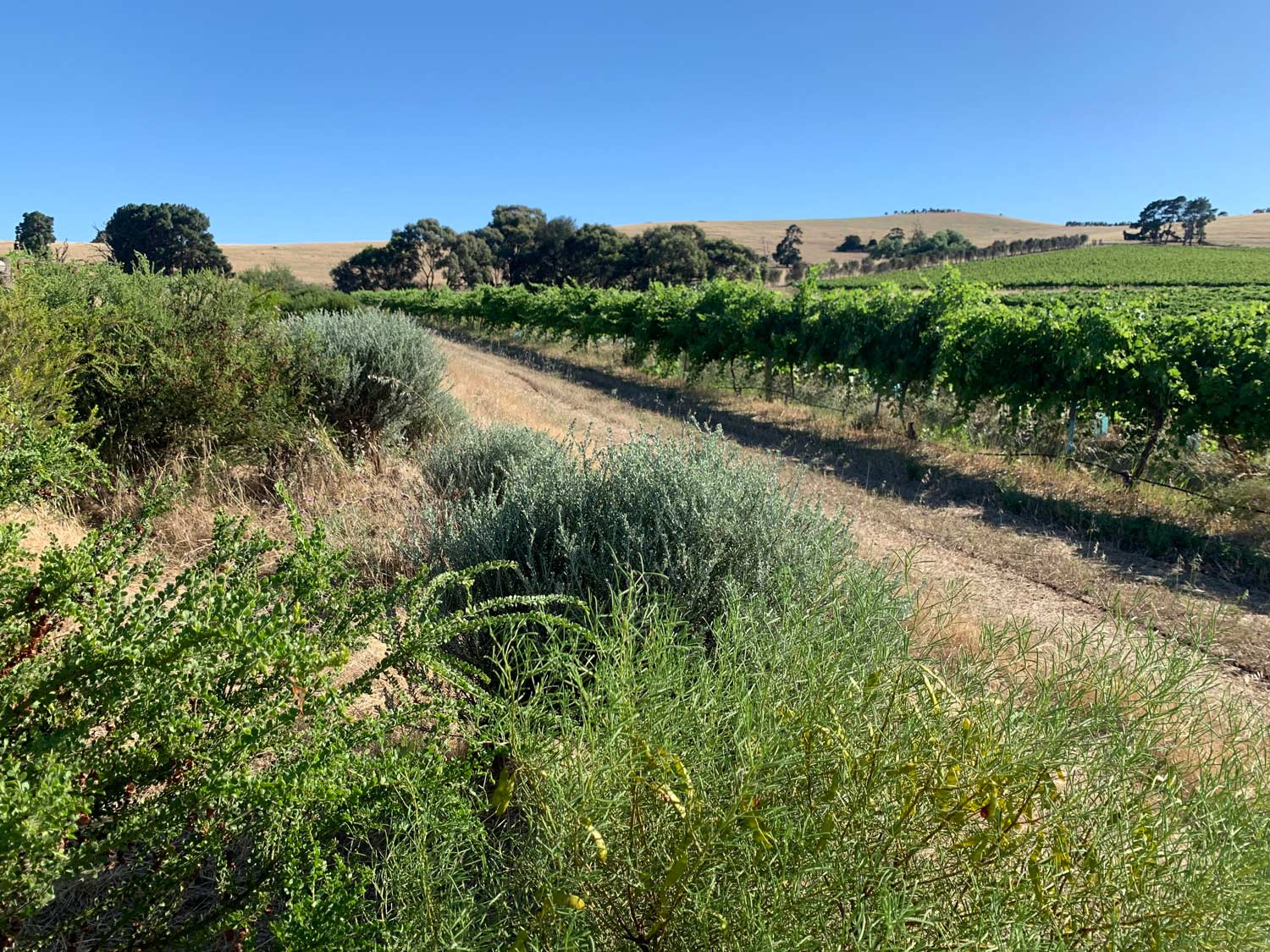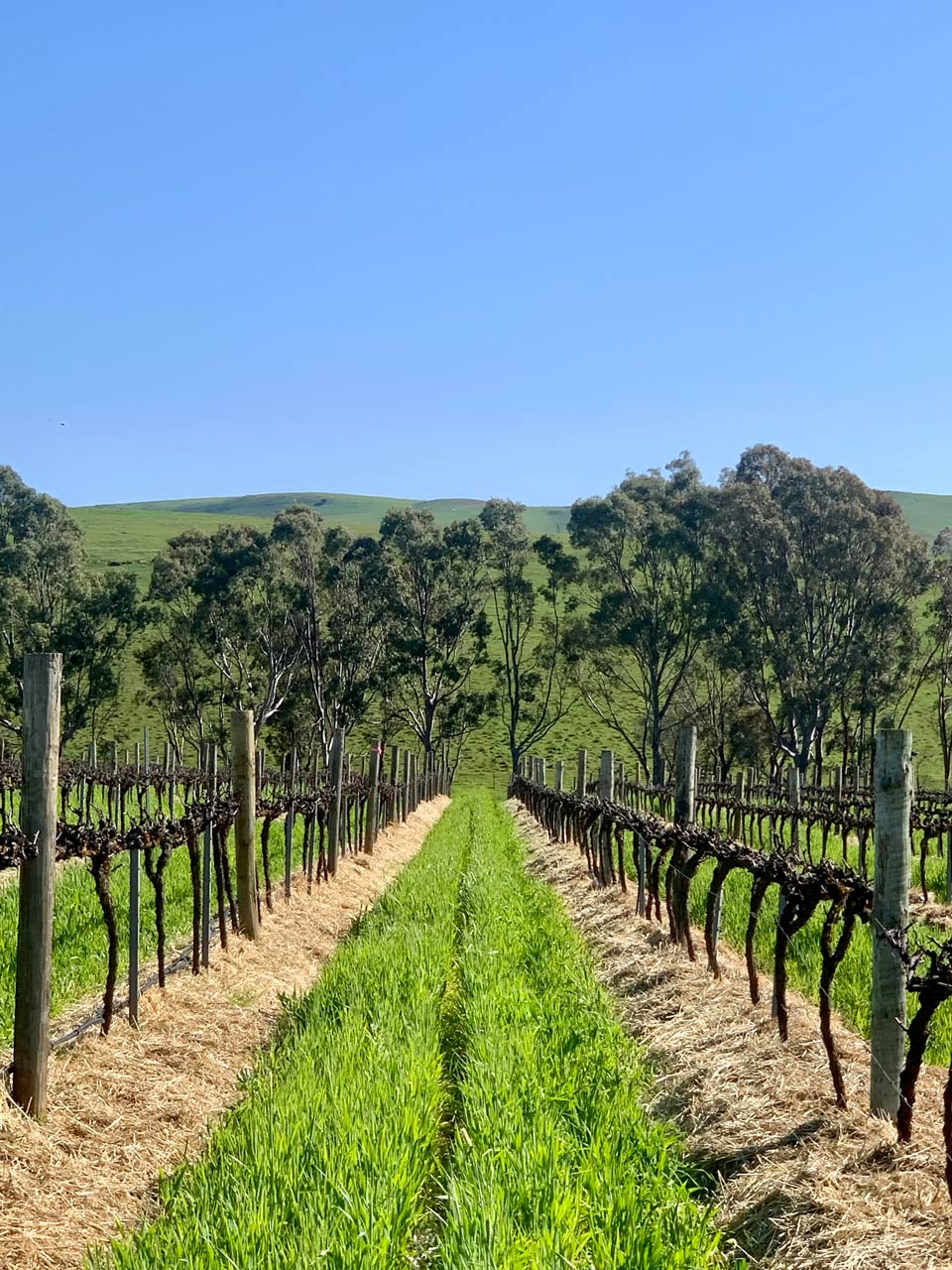In Clare Valley’s subregion of Watervale, the Castine’s began planting grapevines in 1996 on their property which they had farmed for four generations. 37-hectares of vines are now spread across two distinct blocks on the vineyard, consisting of riesling, shiraz, cabernet sauvignon, and grenache. Today, the site is managed by Ben Castine and his wife Jess Smythe-Castine, with a firm focus on land ecology and fruit quality. An impressive lineup of top labels are benefactors of the Castine-Morella Vineyard fruit, such as Wines by KT, Vickery, O’Leary Walker, Tim Gramp, Dorien Estate Winery, Taylors, and Kenny Wines.
“We work closely with winemakers who value single vineyard wines – allowing the vineyard to express itself without too much winemaking intervention”, says Ben Castine. A telling statement of their philosophy.
The vineyard is currently undergoing a significant phase dedicated to enhancing soil health. This includes minimal tilling, retention of organic matter, native cover crops, mulching and the introduction of rotational crash grazing with merino sheep. “Our cabernet sauvignon block is straw mulched and mostly dry grown, allowing the seasonal conditions of each vintage to express itself in the wine.”
But it’s a process. They aim to have the majority of the 35-hectare vineyard under the straw mulch program by 2028, and aim to have all midrows converted to native cover crops by 2035 (1.5-hectares was sown in 2023).
Castine elaborates on how this evolved. “We had a goal to convert mid row to native grasses. However, this is very expensive so we decided to farm our own native seed to convert the vineyard in a more cost effective way. Over time, we plan to harvest our midrow native seed. This gives us diversification with a new business venture to also have the potential to sell this seed to other vineyards and farms looking to convert, whilst improving the environment.”
“Working with the team at Wines by KT, we’re currently trialling how conversion to native plantings both under vine and in the mid row changes the flavour and quality of one of our Shiraz blocks. We’re only at the beginning of this long-term trial, and we’re interested to see how the wines evolve with improvements in soil and vine health.”
Castine is also exploring ways to measure how this translates to improvement in wine. Among the notable winemakers purchasing fruit from Castine is Kerri Thomson of Wines by KT, and he describes how they collaborate, “Working with the team at Wines by KT, we’re currently trialling how conversion to native plantings both under vine and in the mid row changes the flavour and quality of one of our Shiraz blocks. We’re only at the beginning of this long-term trial, and we’re interested to see how the wines evolve with improvements in soil and vine health.”
Castine had a pivotal insight that made him resolute on the steps toward sustainability. “Realising that over-use of herbicides creates the ideal environment for weeds to grow, resulting in the cycle of more herbicide use and more weeds. Under vine straw mulching has given our soils a break from this cycle as we begin the process of improving our soil health. Also, what constitutes a ‘good’ vineyard? A neat, manicured, cultivated and clean vineyard is not necessarily a healthy vineyard.”
This is central to his philosophy. “For us, sustainability is about recognition of what came before agriculture, trialling ways to return it to this natural state in an economically feasible way, and sharing both our successes and failures with the community. We believe that broad scale adoption of sustainable practices in the Australian wine sector will be aided by presenting strong economic cases for doing so. To help guide these methods, we’re learning from the pioneers of sustainable viticulture as to what they have found works best on a practical level. The knowledge that these people have is so valuable, and hopefully we can help to bring this knowledge to the wider grape growing community.
This native seed bank idea is quite groundbreaking. “We believe that we are the first vineyard in Australia to build a native seedbank dedicated to harvesting and incorporating this seed back into the vineyard,” says Castine.
“We believe that we are the first vineyard in Australia to build a native seedbank dedicated to harvesting and incorporating this seed back into the vineyard.”
And his goal? “Our principle drive is to return the vineyard environment as close as we can to its pre-agricultural state, while continuing to produce high quality grapes as an additional new component of the ecosystem. Our aim is to convert all 37 hectares of vineyard floor (mid row and some blocks to under vine) to native grasses and plants by 2035.”
The results are coming. “Under vine straw mulching has been a big win for us, resulting in high quality fruit, better yields, better water retention, elimination of under vine herbicides and increased soil health. In time, we hope to see benefits of the combination of under vine straw mulch and the increased biodiversity of mid row incorporation of native plants.”
Castine pulls the future necessity into focus with their work. “Climate change is our biggest challenge. Building resilience in the vineyard is essential to combat the climate challenges that we’ll inevitably face. We’re building this resilience through improving the overall health of the vineyard ecosystem. With limited irrigation water available in the Clare Valley, improving soil water holding capacity by building soil health is important. We’ve also seen increased potential for sunburn of the grapes and have changed our canopy management to allow more protection, particularly in our riesling blocks.”
Castine-Morella Vineyard is weaving a legacy of resilience and sustainability for the next generation, addressing the urgent challenges of climate change head-on. By enriching the vineyard’s ecosystem and pioneering adaptive strategies, they ensure that the land they cherish will thrive for their children, the forthcoming fifth generation, securing a future where tradition and innovation harmoniously coexist.






